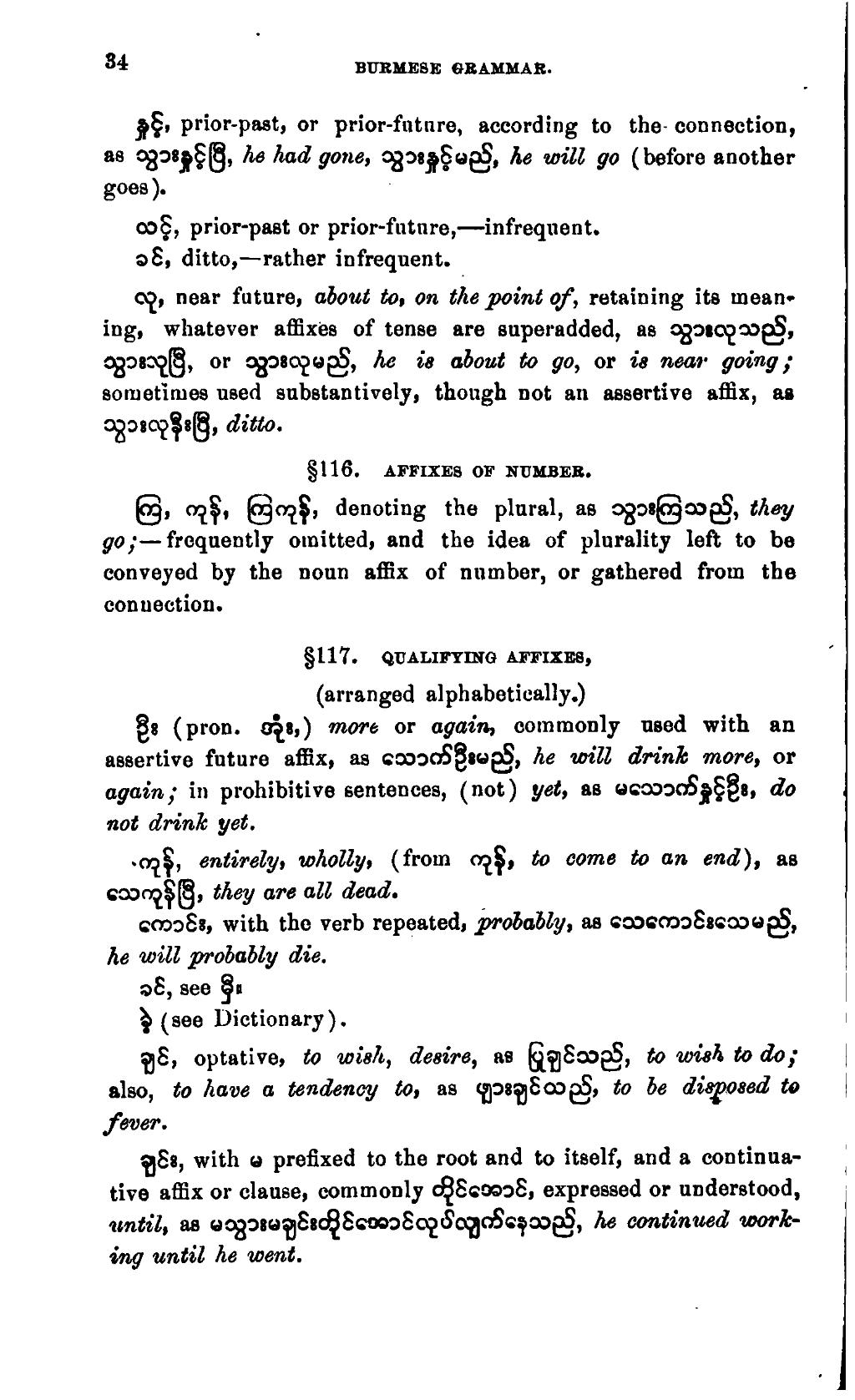နှင့်, prior-past, or prior-future, according to the connection, as သွားနှင့်ပြီ, he had gone, သွားနှင့်မည်, he will go (before another goes).
လင့်, prior-past or prior-future,—infrequent.
ခင်, ditto,—rather infrequent.
လု, near future, about to, on the point of, retaining its meaning, whatever affixes of tense are superadded, as သွားလုသည်, သွားလုပြီ, or သွားလုမည်, he is about to go, or is near going; sometimes used substantively, though not an assertive affix, as သွားလုနီးပြီ, ditto.
§116. affixes of number.
ကြ, ကုန်, ကြကုန်, denoting the plural, as သွားကြသည်, they go;—frequently omitted, and the idea of plurality left to be conveyed by the noun affix of number, or gathered from the connection.
§117. qualifying affixes.
(arranged alphabetically.)
ဦး (pron. အုံး,) more or again, commonly used with an assertive future affix, as သောက်ဦးမည်, he will drink more, or again; in prohibitive sentences, (not) yet, as မသောက်နှင့်ဦး, do not drink yet.
ကုန်, entirely, wholly, (from ကုန်, to come to an end), as သေကုန်ပြီ, they are all dead.
ကောင်း, with the verb repeated, probably, as သေကောင်းသေမည်, he will probably die.
ခင်, see မှီ.
ခဲ့ (see Dictionary).
ချင်, optative, to wish, desire, as ပြုချင်သည်, to wish to do; also, to have a tendency to, as ဖျားချင်ထည်, to be disposed to fever.
ချင်း, with မ prefixed to the root and to itself, and a continuative affix or clause, commonly တိုင်အောင်, expressed or understood, until, as မသွားမချင်းတိုင်အောင်လုပ်လျက်နေသည်, he continued working until he went.
